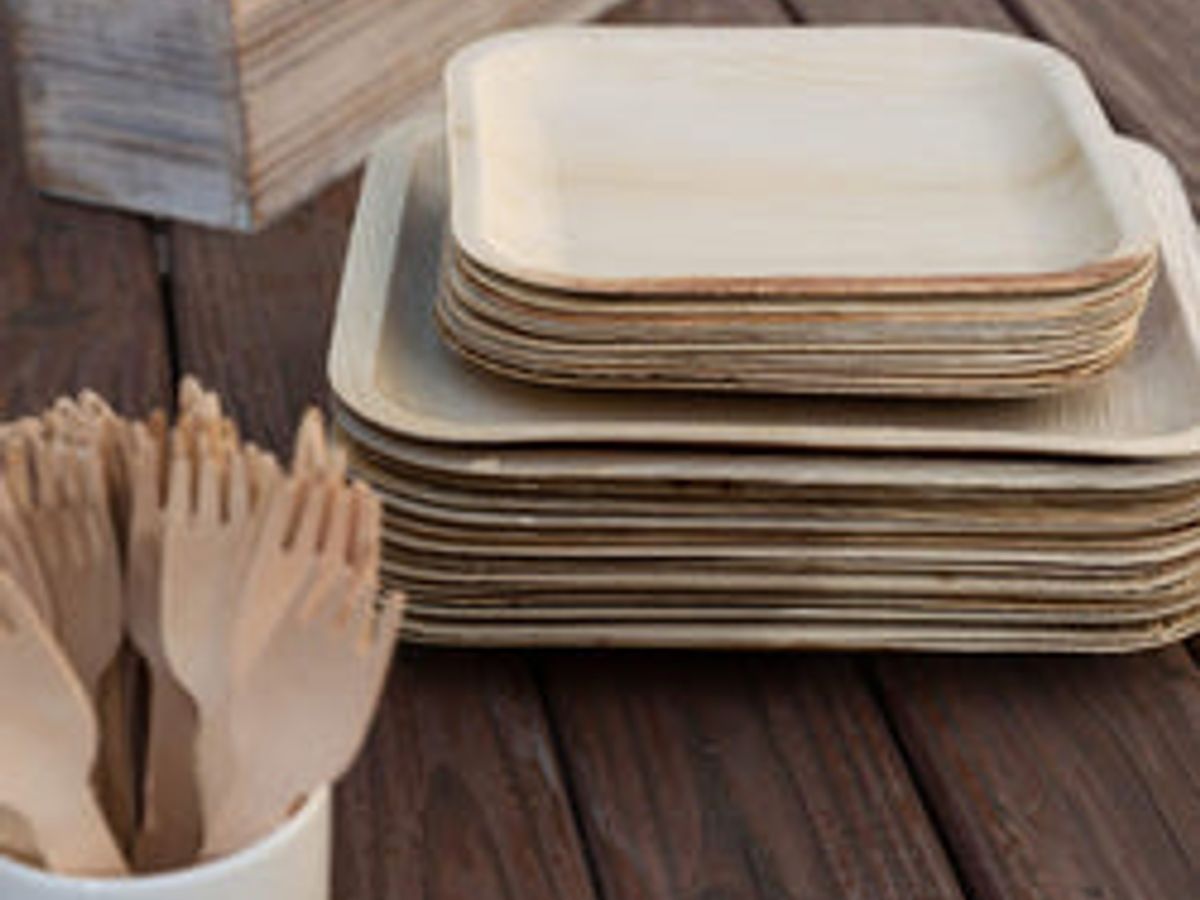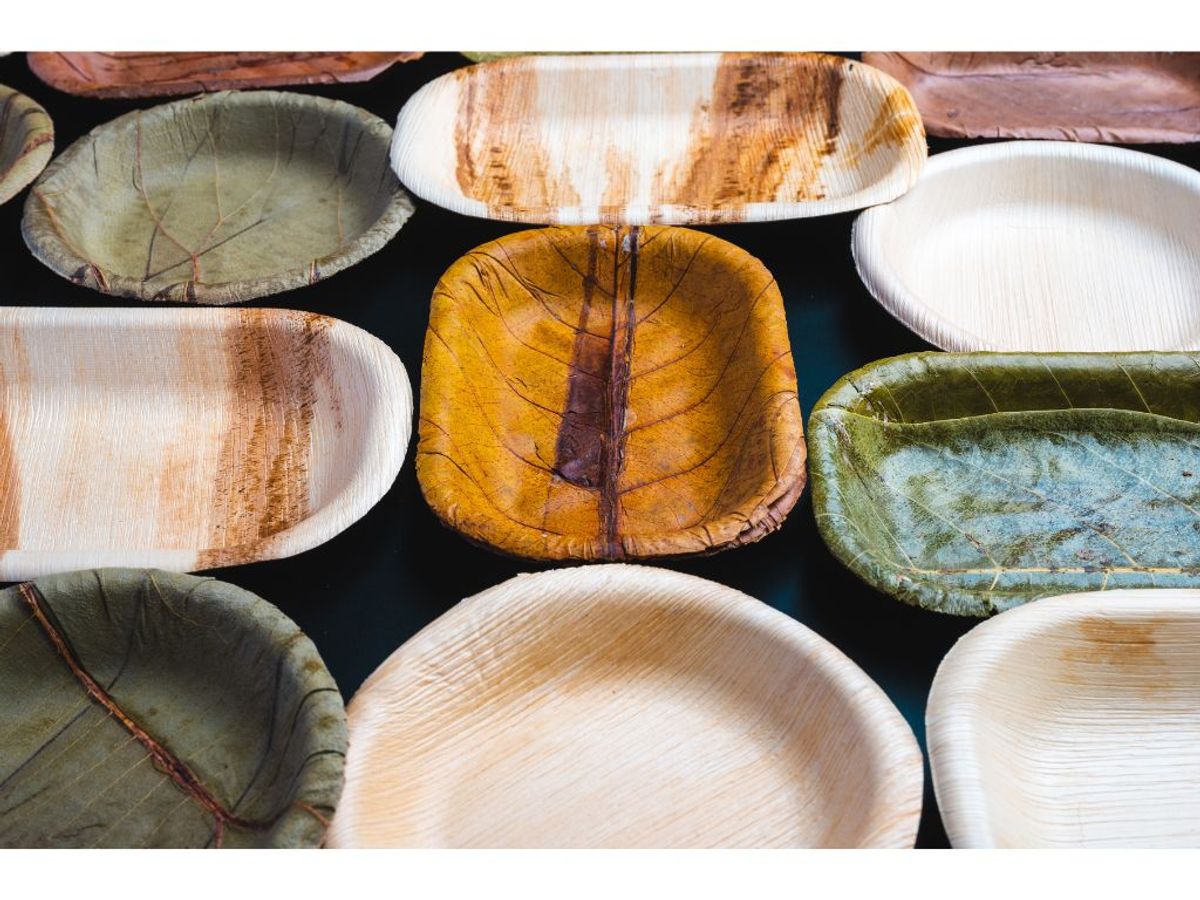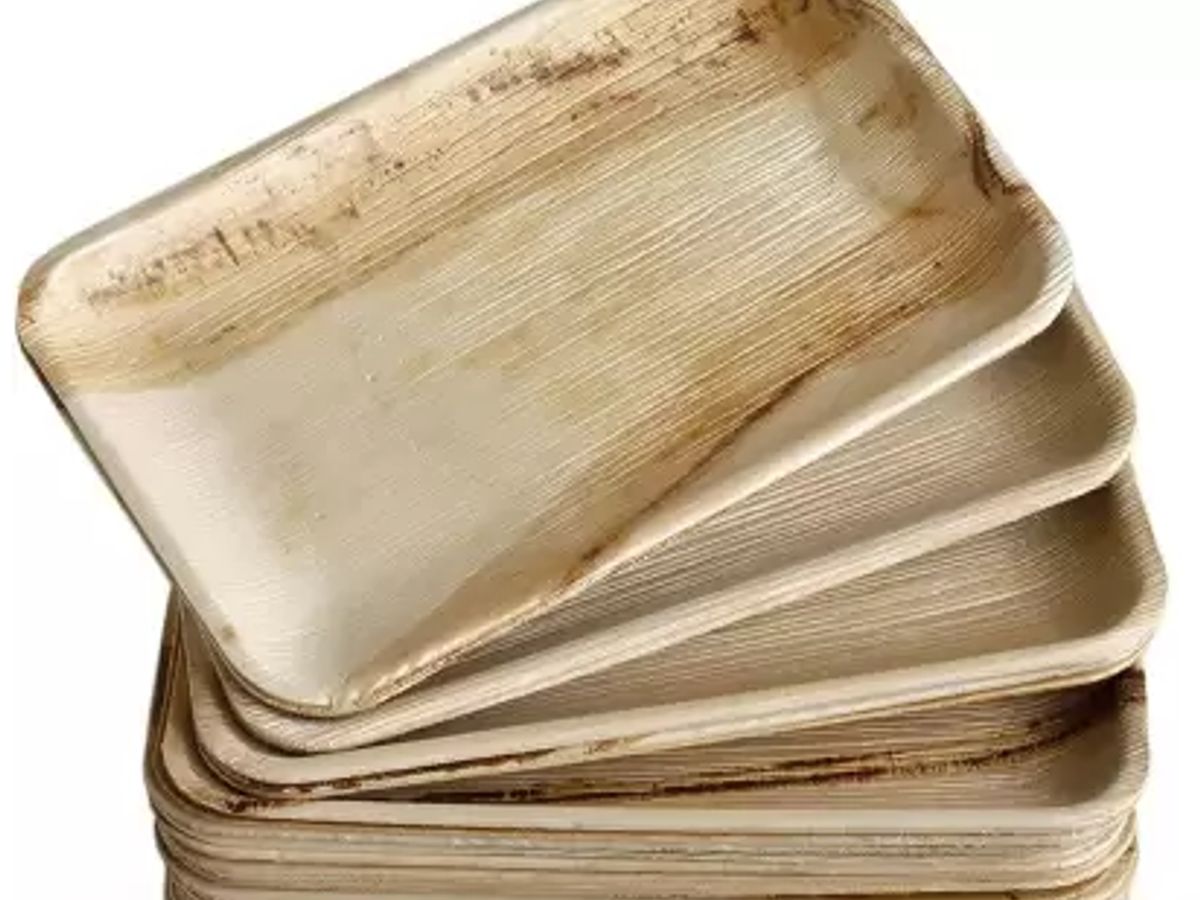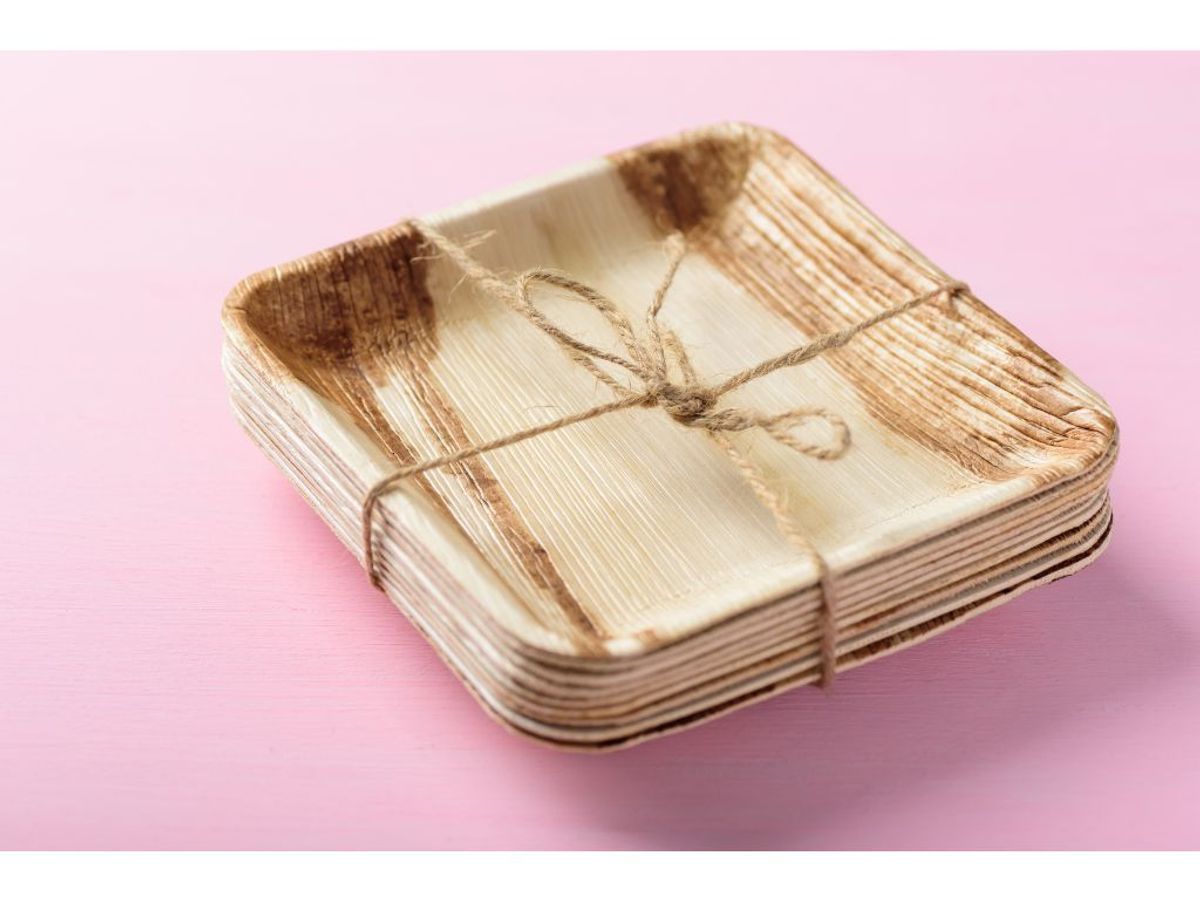The Sustainable Choice: Exploring the Benefits of Leaf Plates

In today’s world, making eco-friendly choices is more important than ever. One simple way to help the environment is by using leaf plates. These plates are made from natural leaves and are a great alternative to plastic or paper plates. They are not only good for the planet but also practical for everyday use. This article will explore the benefits of leaf plates, their environmental impact, and how they compare to other eco-friendly options.
Key Takeaways
- Leaf plates are biodegradable and break down naturally, unlike plastic plates.
- Using leaf plates helps reduce the amount of plastic waste in landfills and oceans.
- Leaf plates are made from naturally fallen leaves, ensuring no trees are harmed.
- They are sturdy and can hold both hot and cold foods without breaking.
- Choosing leaf plates supports sustainable practices and eco-friendly businesses.
Understanding Leaf Plates

What Are Leaf Plates?
Leaf plates are an eco-friendly alternative to traditional disposable plates. They are made from naturally fallen leaves, often from the areca palm tree. These leaves are collected, cleaned, and heat-pressed into various shapes and sizes. This process ensures that no trees are harmed, making leaf plates a sustainable choice for dining.
Types of Leaf Plates
There are several types of leaf plates available in the market, each catering to different needs and preferences:
- Areca Palm Leaf Plates: Made from fallen areca palm leaves, these plates are biodegradable and compostable.
- Banana Leaf Plates: Often used in tropical regions, these plates are also biodegradable and offer a unique dining experience.
- Other Leaf Plates: Plates made from other types of leaves, such as bamboo or teak, are also available.
How Are Leaf Plates Made?
The production of leaf plates involves a few simple steps:
- Collection: Naturally fallen leaves are gathered from farms.
- Cleaning: The leaves are washed and sun-dried.
- Heat-Pressing: The clean leaves are placed in preheated molds to form the desired shapes.
- Packaging: The plates are packed into sets, often with custom branding.
This process is chemical-free, ensuring that the plates are safe for use and environmentally friendly. For more details, you can [explore top areca palm leaf manufacturers](explore-areca-palm-leaf-plates-manufacturers/).
Environmental Benefits of Leaf Plates

Biodegradability and Compostability
One of the biggest advantages of leaf plates is their biodegradability. Unlike plastic plates that can take hundreds of years to break down, leaf plates naturally decompose within a few months. This means they don’t leave behind harmful residues or microplastics, making them a much better choice for the environment. Additionally, leaf plates are compostable, which means they can be turned into nutrient-rich compost that benefits gardens and landscapes.
Reduction in Plastic Waste
Using leaf plates helps in the reduction of plastic waste. Every time you choose a leaf plate over a plastic one, you are helping to decrease the amount of plastic that ends up in landfills and oceans. This is crucial for protecting wildlife and maintaining a cleaner environment. By opting for leaf plates, you are making a conscious decision to support a more sustainable lifestyle.
Sustainable Sourcing of Materials
Leaf plates are made from natural materials like the leaves of the areca palm. These leaves are collected after they have naturally fallen, ensuring that no trees are harmed in the process. This sustainable sourcing method not only conserves natural resources but also provides a livelihood for local communities involved in the collection and manufacturing process. By choosing leaf plates, you are supporting eco-friendly practices and contributing to a more sustainable future.
Practical Uses for Leaf Plates
Home and Everyday Use
Leaf plates are perfect for daily meals at home. They are sturdy enough to hold both hot and cold foods, making them a versatile choice for any meal. Using leaf plates can add a touch of nature to your dining experience. They are also disposable, which means no more washing dishes! Simply compost them after use, and they will break down naturally, enriching the soil.
Events and Celebrations
For special occasions like weddings, birthdays, and family gatherings, leaf plates offer an eco-friendly alternative to traditional disposable tableware. Their natural look adds a rustic charm to any event. Plus, they come in various shapes and sizes, so you can find the perfect fit for any type of food. Using leaf plates can make your event more sustainable and reduce plastic waste.
Commercial and Catering Applications
Restaurants and catering services can benefit greatly from using leaf plates. They are not only eco-friendly but also durable enough to handle a variety of dishes. Many areca palm leaf manufacturers offer bulk purchasing options, making it cost-effective for businesses. By choosing areca palm leaf plates, businesses can appeal to eco-conscious customers and enhance their brand image. Additionally, these plates are free from harmful chemicals, ensuring a safe dining experience for all.
Comparing Leaf Plates to Other Eco-Friendly Alternatives

Leaf Plates vs. Bamboo Plates
Leaf plates, especially those made from areca palm leaves, are a popular choice for eco-conscious consumers. They are compostable and break down naturally within a few weeks. In contrast, bamboo plates, while also sustainable, take longer to decompose and are generally more expensive. The production of leaf plates involves minimal energy and no chemicals, making them a more eco-friendly option.
Leaf Plates vs. Paper Plates
When comparing leaf plates to paper plates, leaf plates come out on top in terms of sustainability. Paper plates often require cutting down trees and involve chemical processes. Leaf plates, on the other hand, are made from naturally fallen leaves, making them a more sustainable and renewable choice. Additionally, leaf plates are sturdier and can hold both hot and cold foods without getting soggy.
Leaf Plates vs. Plastic Plates
Plastic plates are the least eco-friendly option among disposable tableware. They are not biodegradable and contribute significantly to plastic waste. Leaf plates, being biodegradable and compostable, offer a much more sustainable alternative. By choosing leaf plates, you help reduce plastic waste and promote a greener planet. Plus, leaf plates are free from harmful chemicals, ensuring a safe dining experience.
Challenges and Solutions in the Leaf Plate Industry
The leaf plate industry, while promising, faces several challenges that need to be addressed to ensure its growth and sustainability. Below are some of the key challenges and potential solutions.
Production and Supply Chain Issues
The global demand for palm leaf plates has been steadily increasing, driven by eco-conscious consumers. However, this surge in demand has led to production and supply chain challenges. Areca palm leaf manufacturers often face difficulties in sourcing enough raw materials, especially during off-seasons. Additionally, the process of collecting, cleaning, and heat-pressing the leaves can be labor-intensive and time-consuming.
Solutions:
- Diversify sourcing locations: By sourcing areca palm leaves from multiple regions, manufacturers can ensure a steady supply throughout the year.
- Invest in technology: Modernizing the production process can help streamline operations and reduce labor costs.
- Collaborate with local farmers: Building strong relationships with farmers can secure a consistent supply of raw materials.
Cost and Pricing Challenges
Leaf plates are generally more expensive than their plastic counterparts. This price difference can be a barrier for widespread adoption, especially in markets sensitive to cost. The higher costs are often due to the labor-intensive production process and the sustainable sourcing of materials.
Solutions:
- Economies of scale: Increasing production volumes can help lower costs per unit.
- Government subsidies: Advocating for subsidies or tax breaks for eco-friendly products can help reduce costs.
- Consumer education: Informing consumers about the long-term environmental benefits can justify the higher price.
Consumer Awareness and Education
Despite their environmental benefits, leaf plates are still relatively new to many consumers. Increasing awareness about their advantages over traditional plastic or paper plates is crucial. Educating consumers on the benefits of using areca palm leaf plates and how they serve as a sustainable alternative can help boost acceptance and demand. Marketing efforts should focus on highlighting their eco-friendly nature, biodegradability, and aesthetic appeal.
Solutions:
- Marketing campaigns: Use social media and other platforms to spread awareness about the benefits of leaf plates.
- Partnerships: Collaborate with environmental organizations to promote the use of leaf plates.
- Demonstrations: Host events or workshops to show the practical uses and benefits of leaf plates.
How to Choose the Right Leaf Plates for Your Needs

Factors to Consider
When picking leaf plates, think about the size and shape that will work best for your event. Different occasions might need different sizes, so choose the right dimensions for serving. The shape can also add a special touch to your table setting. Another important factor is the thickness and sturdiness of the material. Thicker plates are usually more durable and can hold heavier portions without bending or breaking. It’s smart to pick plates that can handle different types of food to ensure a smooth dining experience.
Popular Brands and Suppliers
There are several well-known brands and suppliers of leaf plates. For instance, Arbhu Enterprises is a trusted name in the industry. They specialize in eco-friendly areca palm leaf plates and cater to the growing demand for sustainable dining. These plates are made from fallen palm leaves without chemicals, making them sturdy and compostable.
Customer Reviews and Testimonials
Reading customer reviews and testimonials can help you make an informed decision. Look for feedback on the durability, appearance, and overall quality of the plates. Positive reviews can give you confidence in your choice, while negative reviews can alert you to potential issues. Many users highlight the environmental benefits and versatility of these plates, making them a popular choice for eco-conscious consumers.
Conclusion
Switching to leaf plates is a simple yet powerful way to help the environment. These plates are not only strong and practical but also break down naturally, unlike plastic. By choosing leaf plates, you help cut down on waste and protect nature. Plus, they add a unique, rustic charm to any meal. So, next time you’re planning a picnic or a party, think about using leaf plates. It’s an easy way to make your dining more eco-friendly and show some love to our planet.
Frequently Asked Questions
What are leaf plates?
Leaf plates are eco-friendly alternatives to plastic or paper plates. They are made from leaves that have naturally fallen from trees, which are then cleaned, pressed, and shaped into plates.
Why should I use leaf plates?
Leaf plates are strong, biodegradable, and compostable. They help cut down on plastic waste and are made from materials that would otherwise go to waste.
How long do leaf plates take to decompose?
Leaf plates break down naturally within a few months, making them a great eco-friendly option compared to plastic plates that can take hundreds of years to decompose.
Are leaf plates safe to use with food?
Yes, leaf plates are safe for food use. They are made without chemicals and are naturally heat-pressed, ensuring they are safe for serving both hot and cold dishes.
Can leaf plates be reused?
Leaf plates are designed for single use. However, they are sturdy enough that you might be able to reuse them for light, dry foods if cleaned gently.
Where can I buy leaf plates?
Leaf plates can be purchased from various online retailers, eco-friendly stores, and some supermarkets. Popular brands also offer them through their official websites.


